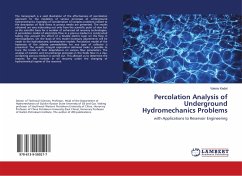For technical, economic, climatic, environmental reasons or due to lack of adequate space on the surface, it is desirable that certain facilities (hydroelectric power plants, various storage houses, water basins: drinking water, waste water and rainwater, socio-cultural and administrative facilities, etc.) are constructed underground. Today, more and more tunnels are built for roads, railways or hydro projects, and they are increasingly longer, so that the achievement of such tunnels with lengths greater than 5-6 km has become quite common. To develop such projects, technically as well as economically, i.e. shortening the execution time, engineers adopt excavation and support technologies from two or more points.To run in good conditions all these underground constructions require a corresponding topographic coordination.
Bitte wählen Sie Ihr Anliegen aus.
Rechnungen
Retourenschein anfordern
Bestellstatus
Storno








